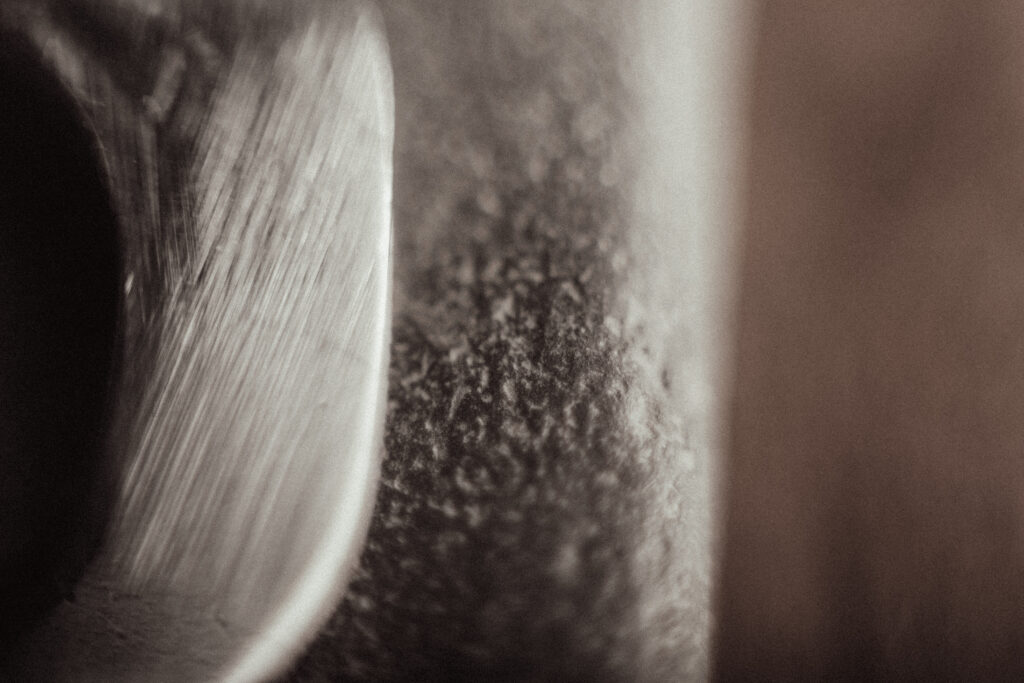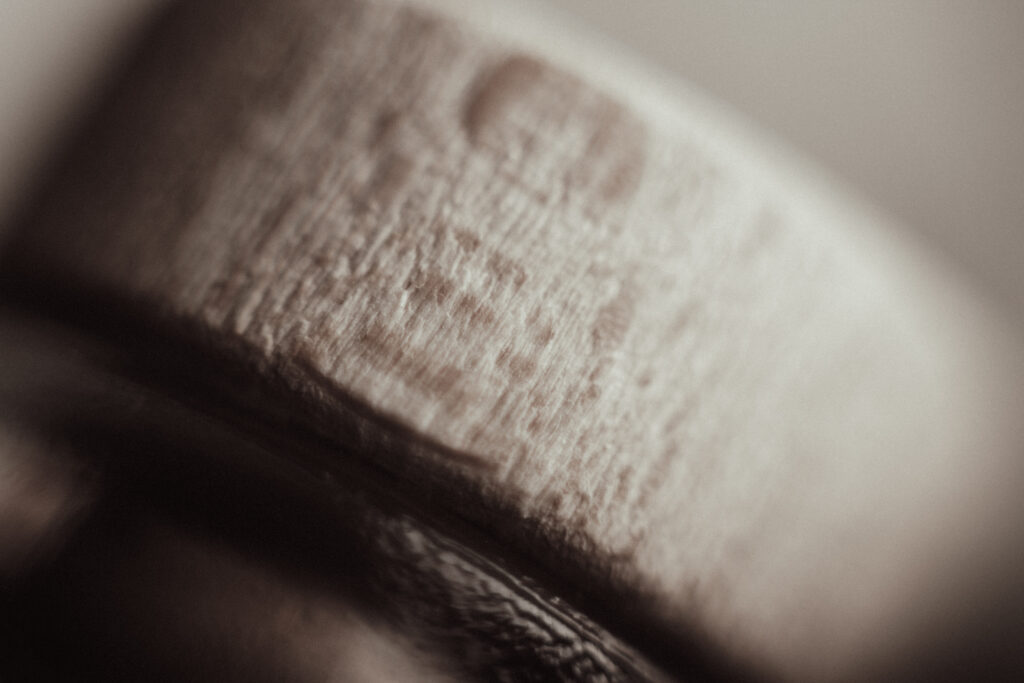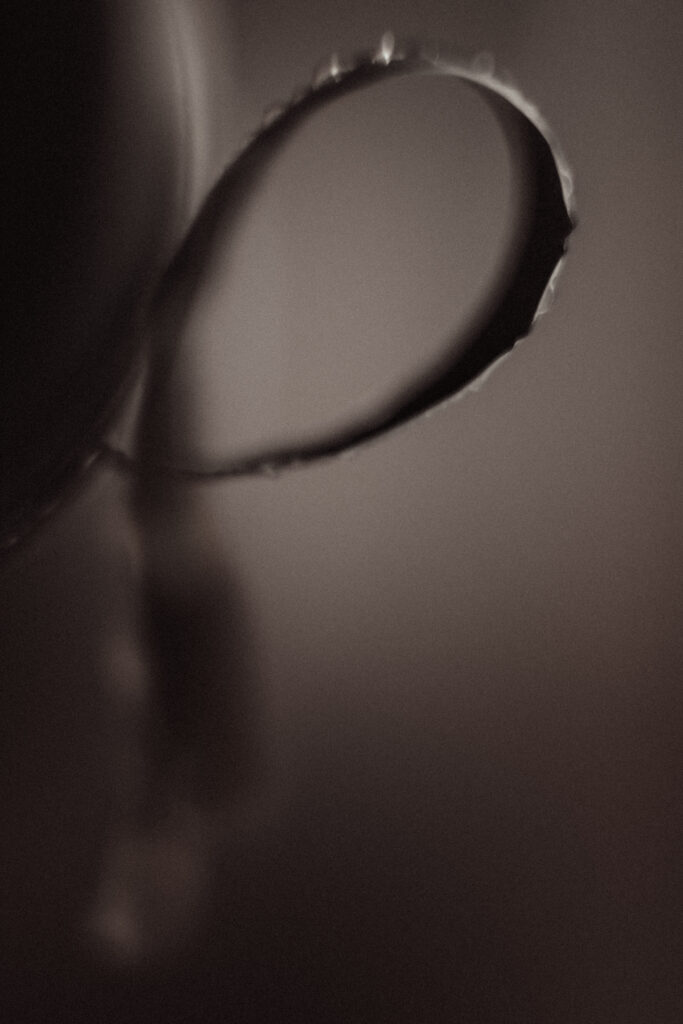Derek Raymond
Photo Editor
My work within photography first began in first grade on my family farm in Brushton, NY. I received a Canon Powershot as a gift and instantly fell in love; my first photograph was of my family’s lawnmower through the screen of our window. I was not interested in photography before this, but the technology of a camera instantly mesmerized me. I loved how I could see details with the camera that I could not with the naked eye. I have always paid attention to the smallest details since that day.
This series, The Study of Shape, consists of macro product photography. This means the products shown, are viewed in a macro, or extremely close, viewpoint. These images represent the idea of how representational forms become ethereal and abstract when seen from different angles, in this case, it is very close. The details captured from my now Canon R6, Canon fanboy here, are incredibly hard to see with the naked eye, or simply do not have the impact they do in this form. The forms of the products became ethereal due to the extreme depth of field; this married my love of abstraction and my preferred photographic category, product photography.







My configuration for my macro photos was a very rudimentary one. I cannot afford a macro lens, so I purchased a ten-dollar extension tube; I lose autofocus, so no caffeine to keep a steady hand, and my field of focus is so small that breathing takes me out of focus. This method may be very time consuming, but I saved hundreds of dollars! Most of my process when I created these images was simply spur of the moment as well; I planned a general idea, such as the subjects and what color scheme I want to focus on, but I usually ended up with one image I like from that idea. This led me to go with the random stream of conciousness my brain follows, and this has left me with some of my best work. Especially with abstract work, I do not see the object as a bottle for example; I see the shape it makes, and the interaction that shape has with the others on the table, with the background, and within itself. I focused on the line, texture, form, and light these products made and really expressed that. This view has created some my best work. This abstract view reminds me of Edward Weston’s Cabbage Leaf. Cabbage Leaf shows a seemingly mundane object in a beautiful soft light, highlighting all the crevices within the leaf. The form of the cabbage also becomes anthropomorphic.The cabbage looks like human hair, it takes an “uncanny valley” route. I wanted my image to be interpreted in multiple ways. The Cabbage Leaf also being black and white allows the form to be seen without the distracting color. This is exactly what I wanted to convey with my work.
Since I enjoy all the little details in all my, and others’, photographs, it is no surprise I am heavily inspired by, and admire, Peter McKinnon’s work. Throughout Peter’s Youtube videos showing him working, texture is a key component in the process. His coffee photography is what really pushed me in the direction of product photography. His coffee photography shows the incredible texture within the beans, and the product being used in a practical, yet beautiful way. The series of photos he creates have incredible storytelling that I admire. Not to mention the coffee tastes amazing.
These images are in a toned black and white as color can enhance qualities, but also distract. Black and white allows the form of the shape to be seen alone. I wanted a warm tone with these images because true black and white seemed very cold and harsh. I wanted the warm tone to make the imaged inviting. Full color overwhelmed the image and me just viewing it. So a warm-toned black and white color grade was chosen.
This series shows how the world is not simple, it is incredibly complicated and not everything is as it seems. My work, inspired by Peter McKinnon, and Edward Weston, explored how light and shape takes many forms. The time I spent on this series taught me how to be patient, and tested if I really knew what I was doing between pre-production, during photographing, editing, and printing. I find it to be a testament to my time at SUNY Fredonia.
1 “Edward Weston.” Edward Weston & Cole Weston Family Website, https://www.edward-weston.com/edwardweston.
2 “Peter McKinnon.” PETER MCKINNON, https://www.petermckinnon.com/.
